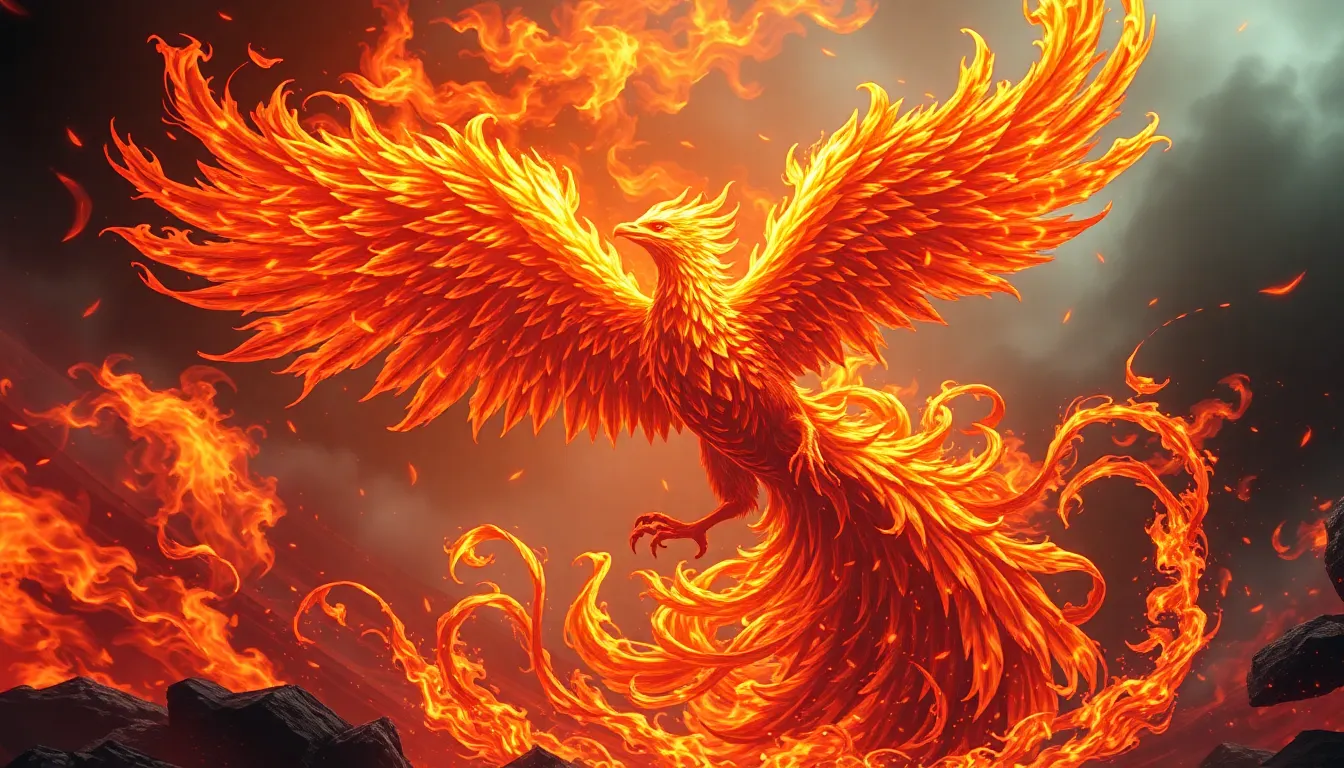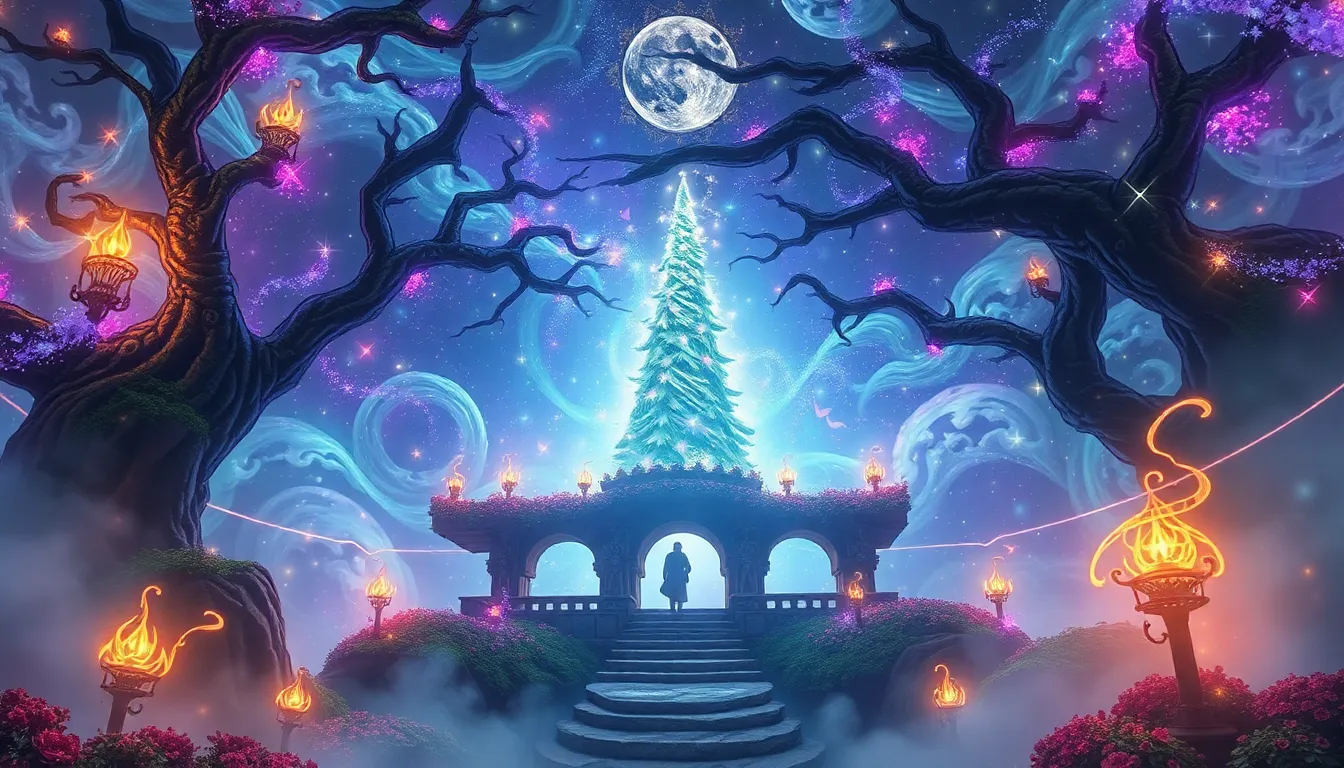The Kingdom of the Phoenix: Myths of Fire and Rebirth
I. Introduction
The myth of the Phoenix has captured the imagination of people across the globe for centuries. This legendary bird, known for its vibrant plumage and the ability to rise from its ashes, serves as a powerful symbol of fire and rebirth. Across various cultures, the themes of destruction and renewal intertwine, reflecting deep-seated beliefs about life, death, and transformation. This article aims to delve into the Kingdom of the Phoenix, exploring its origins, symbolism, and enduring legacy.
II. The Origins of the Phoenix Myth
The Phoenix myth is steeped in rich historical roots that span several ancient civilizations:
- Egyptian mythology: The Bennu bird, often associated with the sun god Ra, symbolized resurrection and was believed to rise from its own ashes.
- Greek mythology: The Phoenix was described by Herodotus and later by other writers, emphasizing its cycle of life and death through fiery rebirth.
- Eastern influences: In India, the myth echoes in the concept of the Garuda, while in Chinese culture, the Fenghuang represents harmony and virtue, embodying the essence of rebirth.
Over time, the myth has evolved, adapting to fit the cultural narratives and spiritual beliefs of different societies.
III. Symbolism of Fire in Mythology
Fire plays a significant role in the symbolism associated with the Phoenix:
- Fire as a purifying element: In many myths, fire cleanses the old, making way for new beginnings.
- The dual nature of fire: Fire is both destructive and creative, representing the fine line between chaos and renewal.
- Cultural interpretations: In relation to the Phoenix, fire symbolizes transformation, passion, and the cyclical nature of existence.
IV. The Cycle of Death and Rebirth
The life cycle of the Phoenix is a poignant representation of the cycle of death and rebirth:
- Birth: The Phoenix is born from the ashes, symbolizing new life emerging from destruction.
- Death: It undergoes a fiery death, often depicted as self-immolation, which is a necessary aspect of its life cycle.
- Rebirth: From the ashes, it rises anew, symbolizing resilience and the endurance of life.
This cycle parallels other mythologies, such as the ouroboros, representing eternity, or the transformation of a caterpillar into a butterfly. Philosophically, the idea of rebirth invites reflection on personal growth and the importance of embracing change.
V. The Kingdom of the Phoenix: A Mythical Realm
The Kingdom of the Phoenix is envisioned as a vibrant realm filled with breathtaking landscapes and unique inhabitants:
- Landscapes: The kingdom is characterized by fiery mountains, lush valleys, and radiant skies that shimmer with hues of red and gold.
- Inhabitants: Its inhabitants, often depicted as mystical beings, are believed to possess the ability to harness the power of fire and transformation.
- Culture: The culture thrives on the ideals of renewal, creativity, and the celebration of life’s cyclical nature.
In this kingdom, the Phoenix is often revered as a ruler or deity, embodying the spirit of the realm and guiding its inhabitants through the cycles of existence. Legends abound, recounting tales of its wisdom and the lessons of rebirth it imparts.
VI. The Phoenix in Art and Literature
The Phoenix has inspired countless works in visual arts and literature:
- Representation in visual arts: Artists have depicted the Phoenix in various forms, from ancient pottery to contemporary paintings, capturing its fiery essence.
- Literary depictions: The Phoenix appears in poetry, novels, and folklore, symbolizing hope and the human experience of overcoming adversity.
- Metaphor for human experience: The Phoenix serves as a powerful metaphor for resilience, illustrating the capacity for renewal in the face of challenges.
VII. Contemporary Interpretations of the Phoenix Myth
In modern times, the Phoenix myth continues to resonate in popular culture:
- Influence on modern media: Movies, books, and video games frequently reference the Phoenix as a symbol of rebirth and empowerment.
- Symbol of resilience: The Phoenix has become emblematic of personal strength, inspiring individuals to embrace their own journeys of transformation.
- Relevance in today’s society: The myth reflects the universal struggles of overcoming adversity, making it a poignant narrative in contemporary discourse.
VIII. Rituals and Celebrations Surrounding the Phoenix
Across cultures, rituals and celebrations inspired by the Phoenix myth highlight its significance in human experience:
- Festivals: Various cultures celebrate festivals that echo the themes of renewal, often involving fire and symbolic acts of transformation.
- Symbolic acts of rebirth: Rituals may include lighting bonfires, creating art, or participating in community events that signify new beginnings.
- Modern adaptations: Many contemporary celebrations incorporate elements of ancient rituals, emphasizing the ongoing relevance of the Phoenix myth in today’s world.
IX. Lessons from the Kingdom of the Phoenix
The Kingdom of the Phoenix teaches valuable lessons about personal growth:
- Insights into transformation: Embracing change is essential for personal development, as illustrated by the Phoenix’s journey.
- Importance of renewal: The myth encourages individuals to seek renewal, reminding us that endings often lead to new beginnings.
- Universal quest for hope: The narrative of the Phoenix resonates with our innate desire for hope and rebirth in challenging times.
X. Conclusion
The Phoenix myth endures as a powerful symbol of fire and rebirth, transcending cultures and time. Its legacy teaches us about the cyclic nature of life, the importance of resilience, and the potential for transformation. As we reflect on the lessons from the Kingdom of the Phoenix, we are reminded of the beauty found in renewal and the hope that comes with each new dawn.



